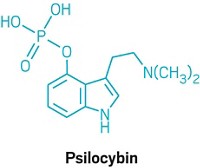Advertisement
Grab your lab coat. Let's get started
Welcome!
Welcome!
Create an account below to get 6 C&EN articles per month, receive newsletters and more - all free.
It seems this is your first time logging in online. Please enter the following information to continue.
As an ACS member you automatically get access to this site. All we need is few more details to create your reading experience.
Not you? Sign in with a different account.
Not you? Sign in with a different account.
ERROR 1
ERROR 1
ERROR 2
ERROR 2
ERROR 2
ERROR 2
ERROR 2
Password and Confirm password must match.
If you have an ACS member number, please enter it here so we can link this account to your membership. (optional)
ERROR 2
ACS values your privacy. By submitting your information, you are gaining access to C&EN and subscribing to our weekly newsletter. We use the information you provide to make your reading experience better, and we will never sell your data to third party members.
ACS Meeting News
A promising alternative to porcine heparin
Researchers have found a new way to make a lifesaving drug in the lab that’s otherwise largely derived from pigs.
by Priyanka Runwal
March 21, 2024
| A version of this story appeared in
Volume 102, Issue 9

Blood-thinning drug heparin is typically derived from pig intestines. These tissues are rich in mast cells that naturally produce heparin. But outbreaks of the dangerous swine fever disease affected major suppliers of crude heparin in China. Shortages of pigs prompted heparin adulteration, which caused more than 100 deaths in the US alone in 2007 and 2008— triggering recalls and further limiting the supply of this lifesaving drug.
The search for an alternative source has been long and arduous. At ACS Spring 2024, in a talk in the Division of Biochemical Technology, chemical and biological engineer Jonathan Dordick of Rensselaer Polytechnic Institute discussed a new, lab-based approach to synthesizing animal-free heparin. This process allowed them to develop a biosynthetic heparin that’s chemically and biologically very similar to porcine heparin, Dordick told C&EN. “It’s as identical as you can get with a complex compound like heparin.”
This research was published recently (Proc. Natl. Acad. Sci. U. S. A. 2024, DOI: 10.1073/pnas.2315586121).
Brian Pfleger, a synthetic biologist at the University of Wisconsin–Madison who attended the talk and wasn’t involved in the work, said that the research was an excellent example of what bioengineering can do for the world. “It’s just absolutely amazing science.”
The first step for Dordick and his colleagues was to extract heparin’s precursor molecule, heparosan, from Escherichia coli. The polysaccharide layer that envelopes cells of gram-negative bacteria such as E. coli contains high amounts of heparosan. Next, they removed the acetyl groups from heparosan and partially replaced them with sulfates. Then, through a series of enzymatic reactions, the researchers turned this N-sulfoheparosan into a compound very similar to heparin. Improving those reactions helped them produce larger amounts of heparin.
The team was also able to convert this bioengineered heparin into a lower-molecular-weight version that’s typically used in medical settings to prevent blood clots. Dordick and his colleagues are now working toward producing this heparin at an even larger scale so the compound can be tested in clinical trials.




Join the conversation
Contact the reporter
Submit a Letter to the Editor for publication
Engage with us on Twitter